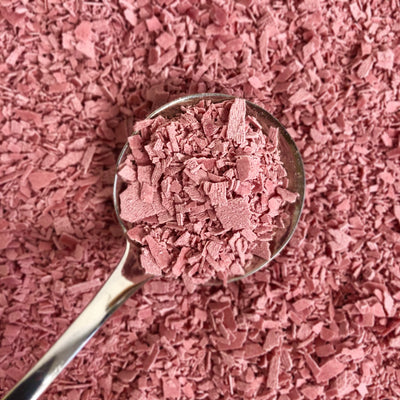Colombia La Cabana
Origin: Colombia
Process: Washed Natural Anaerobic
Producers: La Cabana
Grown: El Agrado, Pital, Southern Huila
Altitude: 1850 metres
Varietals: Caturra
Cupping Score: 87.5
Tasting Notes:
Floral, Strawberry, Vanilla, Winey

Pour Over
- Drip
- Medium Grind
- 30g to 500ml water
- 91-96 ℃
- 2-4 minutes
Espresso
- Pressure
- Find Grind
- 7-10g to 30-60ml water
- 91-96 ℃
- 20-30 seconds
Roast Info:
Light to Medium Roast
Farm Info:
Finca La Cabana is located in El Agrado in Huila Department, Colombia. It's owned and operated by the Perez family, led by Gilberto and his son Danilo. Their focus is on quality and flavour and on achieving this through experimentation and innovation.
Danilo Pérez is the third generation of his family producing coffee in Huila, Colombia. He manages 5 farms and a processing station, leading implementation of a new approach to coffee farming and quality control at his holdings. Within the last years, Alma de Huila, his family brand, has become one of the most recognisable and reputable specialty coffee producers of the region.
He travelled to Australia to improve his English and while he was there, he worked as a barista in a specialty coffee shop. Which is where he discovered the vastness of the specialty coffee world and the implications that could have for his farms if he adapted.
Inspired by a wide range of new coffee flavours and aromas, Danilo prepared and passed an exam to become a Q-Grader. Meeting roasters and producers from different countries, he discovered new processing methods. He also discovered new coffee varieties, as well as the fact that roasting had the potential to severely diminish many of the main characteristics of Colombian coffee and the fact that the only way to achieve sustainable coffee production was to put in place a balanced and transparent relationship between farmers, importers and roasters so that everyone benefits.
So far Alma de Huila has implemented an environmental management quality system. Has a fully traceable distribution chain: from the farmer to the roaster. Now operates a number of different processing and drying methods linked to different fermentation requirements. Danilo is cultivating new coffee varieties on his farms including geisha, pink bourbon, typica. Alongside that Danilo is also sharing his knowledge and experience with other farmers in Huila promoting sustainable and fair coffee production.
Processing Info:
Gilberto Perez and his son Danilo have focused on quality and experimentation, with Danilo taking up the mantle to produce more experimental lots. The Caturra cherries are hand graded, selecting only the ripest, and then fermented anaerobically for 200 hours in airtight pressurised containers with all oxygen removed being de-pulped. This coffee processing method produces distinct lactic acids that create different and distinct flavour profiles. before the coffee beans are then dried on small patio and parabolic beds to 12% humidity.
Coffee Country Info:
Colombia has been commercially producing and exporting coffees renowned for their full body and bright acidity since the early 19th century, though it is thought that Jesuit priests first introduced the crop into the country in the early 18th century. The first commercial coffee plantations were established in the northeast, near the border with Venezuela. Today, coffee is widespread and grown commercially in 20 of Colombia’s 32 Departments.
Historically, Colombia’s most renowned coffee-growing region has been the Eje Cafetero (Coffee Axis), also known as the ‘Coffee Triangle’. This region includes the departments of Caldas, Quindío and Risaralda. With a combined total area of 13,873 km² (5356 mi²), the region covers about 1.2% of the Colombian territory and composes 15% of the total land planted under coffee in the country. The region has also been declared a UNESCO World Heritage site.
While the Eje Cafetero is still a major coffee-producing area, production also now extends far beyond this region and now includes the departments of Huila, Tolima, Cauca and Nariño.
There are an estimated 540,000 coffee producers in the country; around 95% of these are smallholder farmers with landholdings that are under 5 hectares. These farmers collectively contribute around 16% of the country’s annual agricultural GDP.
Colombia boasts a wide range of microclimates and geographic conditions that produce the unique flavours loved in Colombian coffees. While there are many sub-regions and even smaller sub-divisions right down to individual famers in specific regions generally speaking, coffee in Colombia can be separated into three major regions whose climate, soils and altitudes affect tastes.
One such area is Huila in the south, a region famed for producing smooth coffees with high sweetness and citrus notes. They are also known for their medium body and more pronounced acidity. Huila sits on the Columbian massif, under the watchful eye of the country’s highest volcano, Nevado de Huila, as a result the region is blessed with rich volcanic soil, lots of rain, and plenty of hillsides from growing coffee.
As Colombian farmers are increasingly accessing specialty markets, they are experimenting with processing methods beyond the traditional Fully washed method. Producers are experimenting with all kinds of new methods and with adjustments to existing processing including changing fermentation times, adding yeasts or other products to fermenting coffee and more. They’re also producing more Naturals and Honeys of exceptional quality. And these processes are not limited to a select few. Along with Naturals and Honeys, experimentally processed coffees are now coming from a variety of regions across the country.





